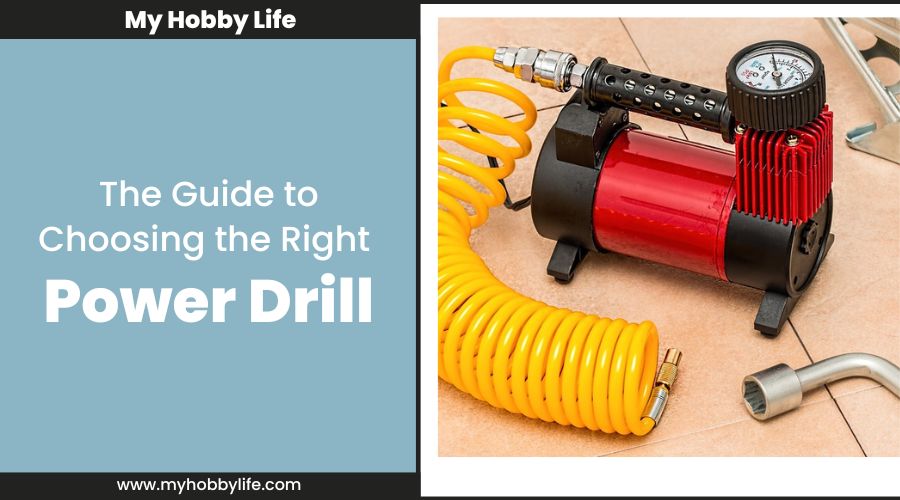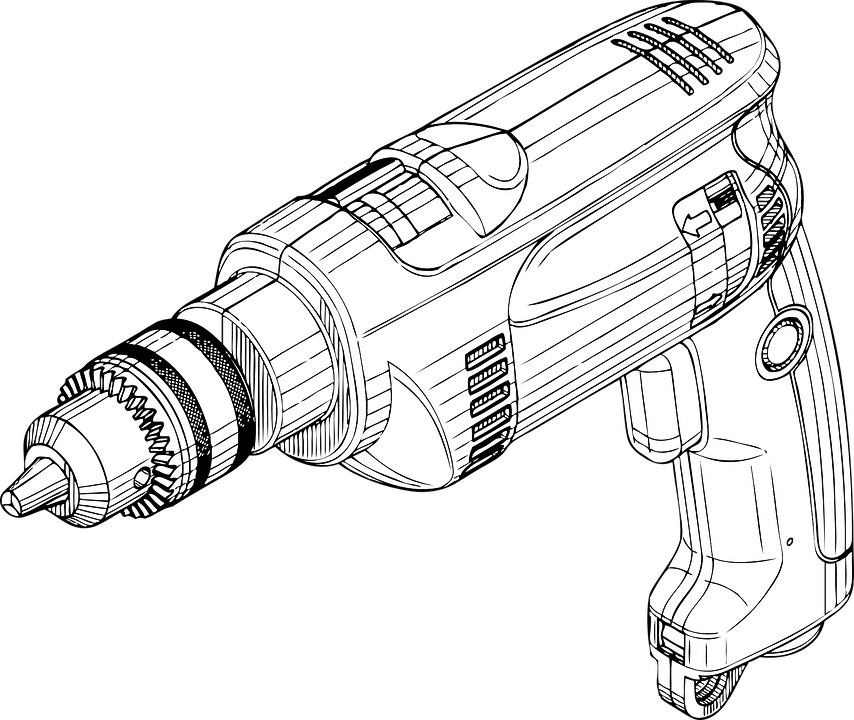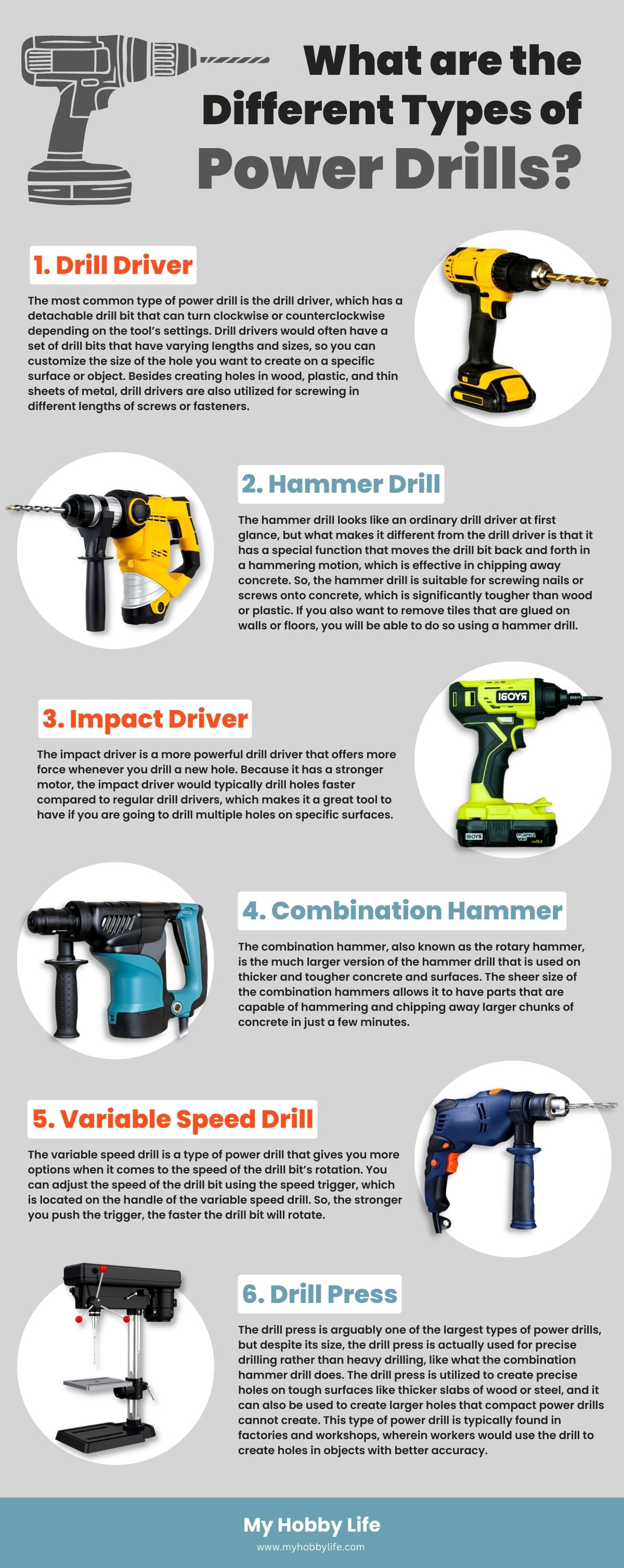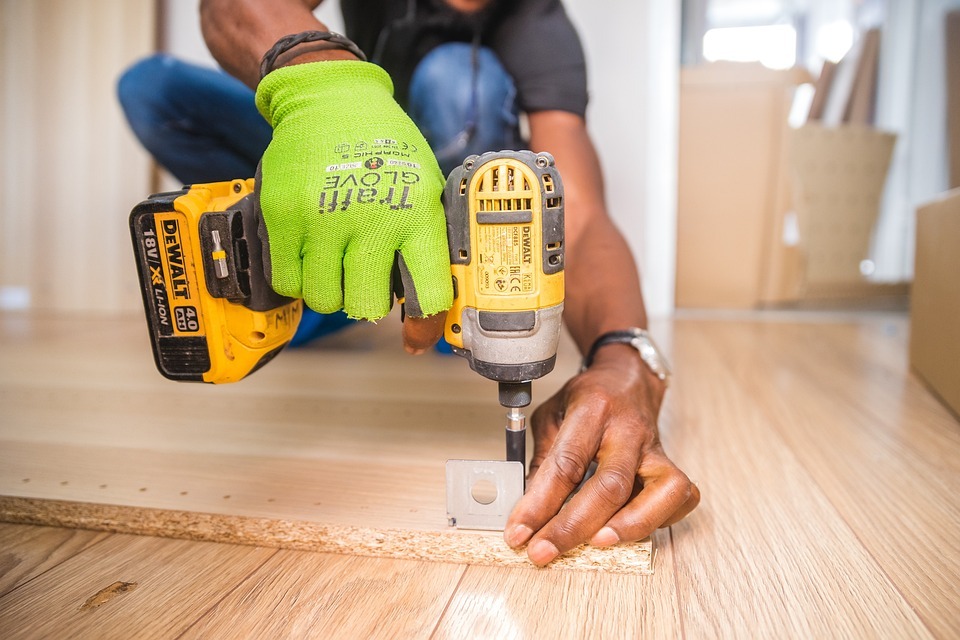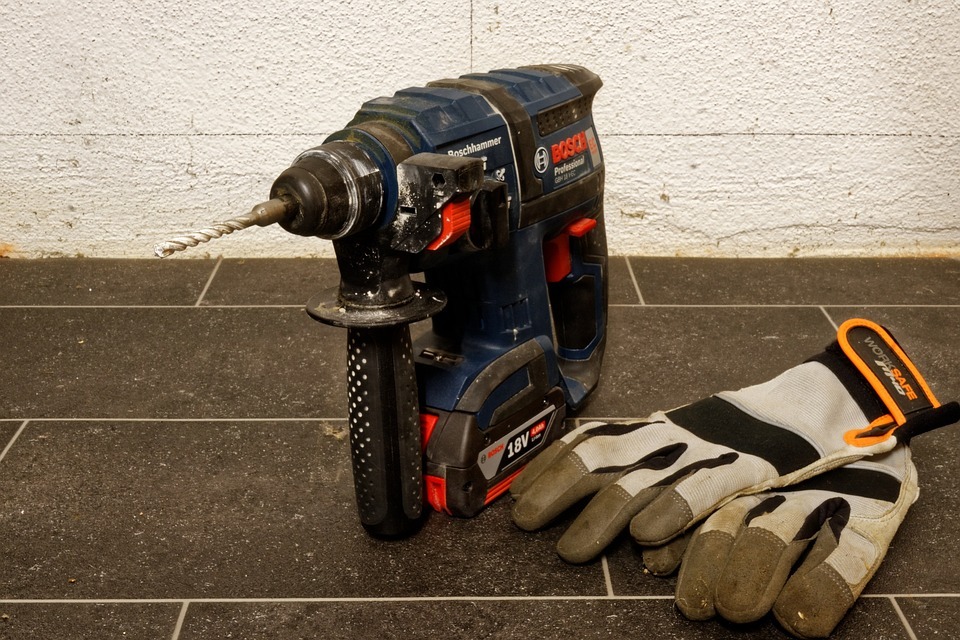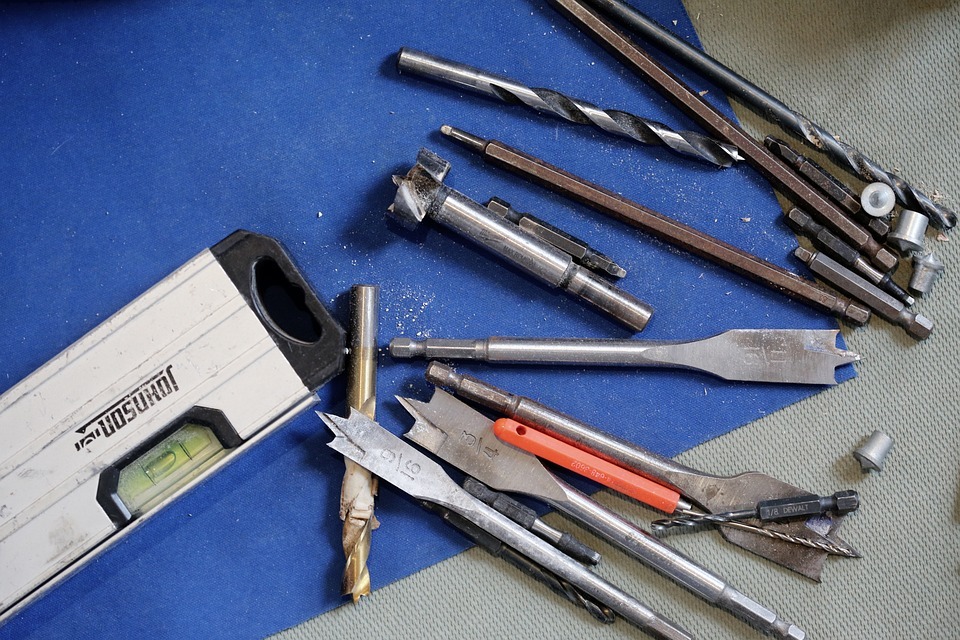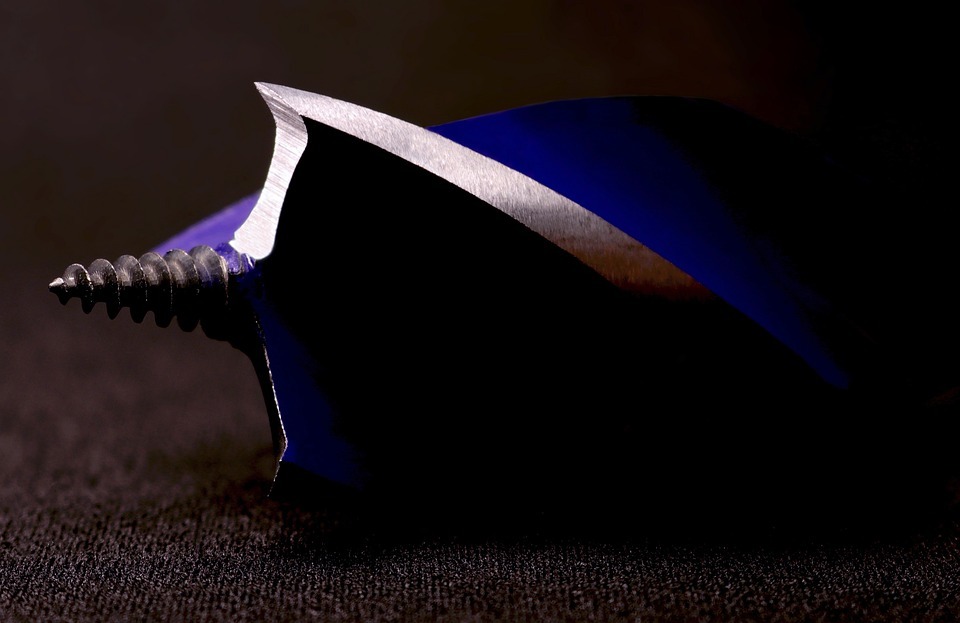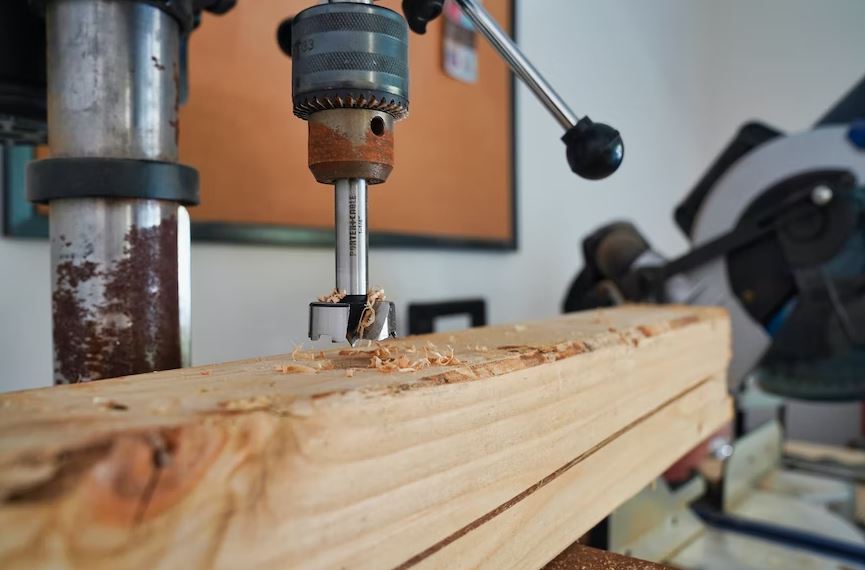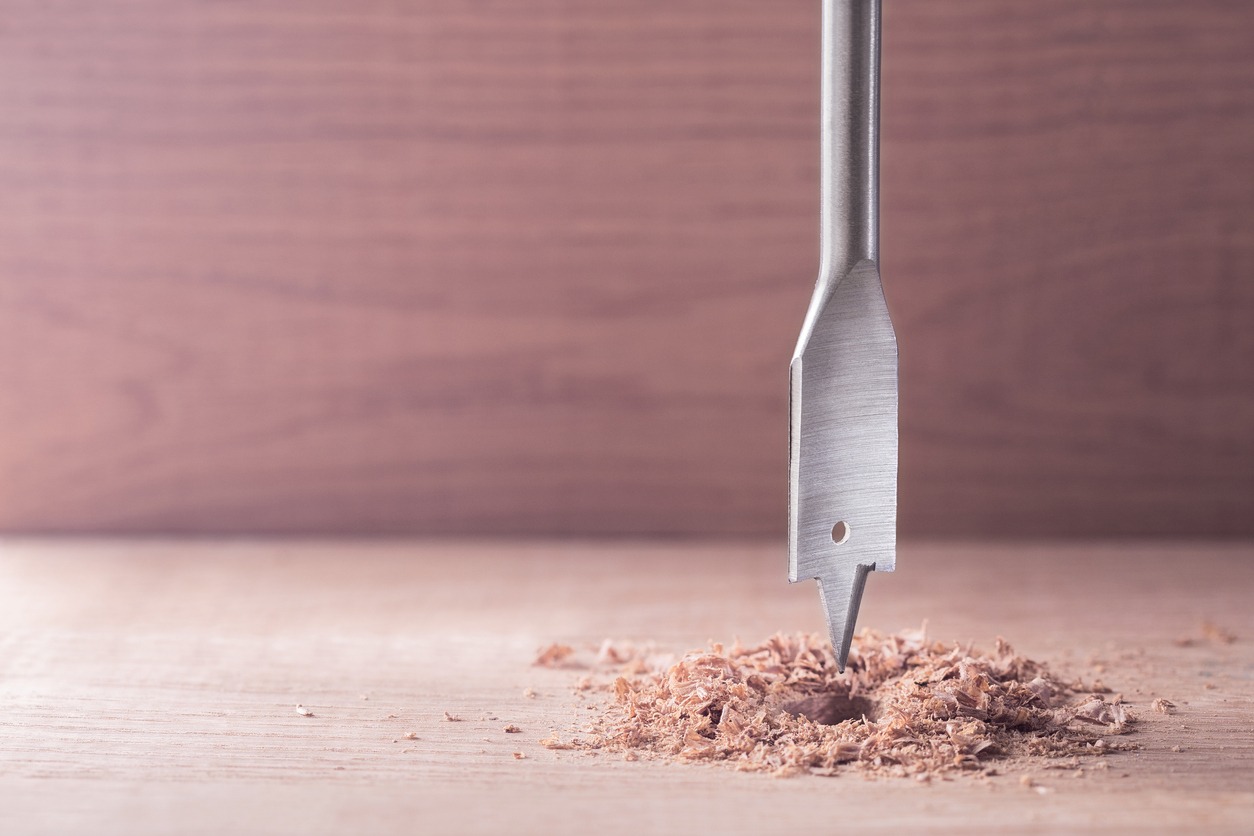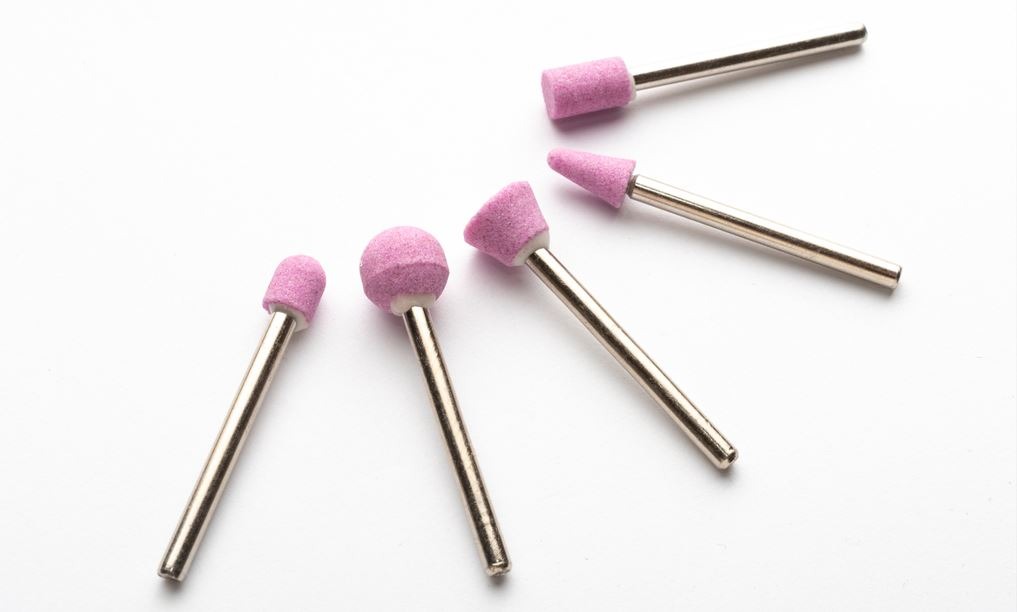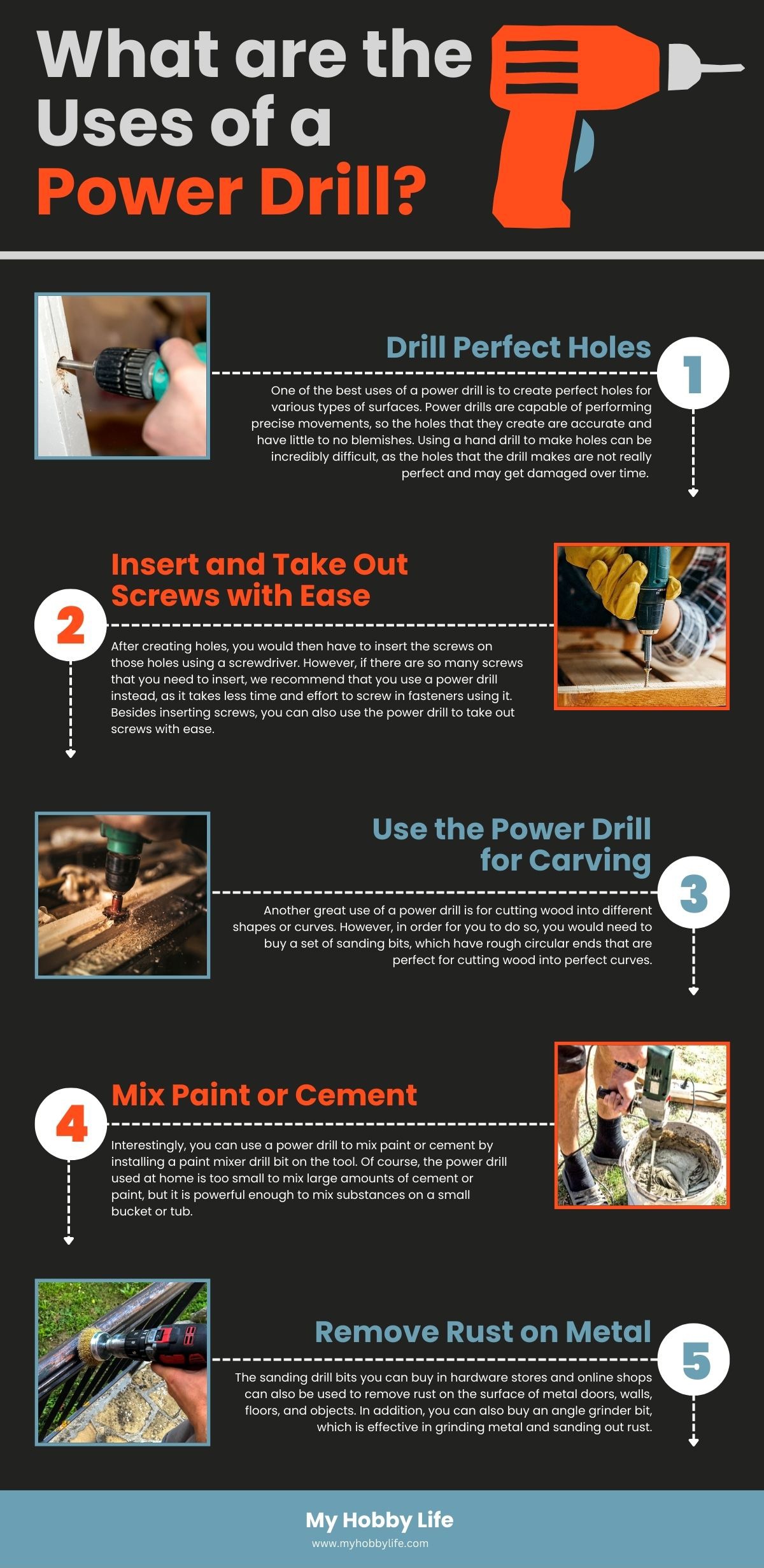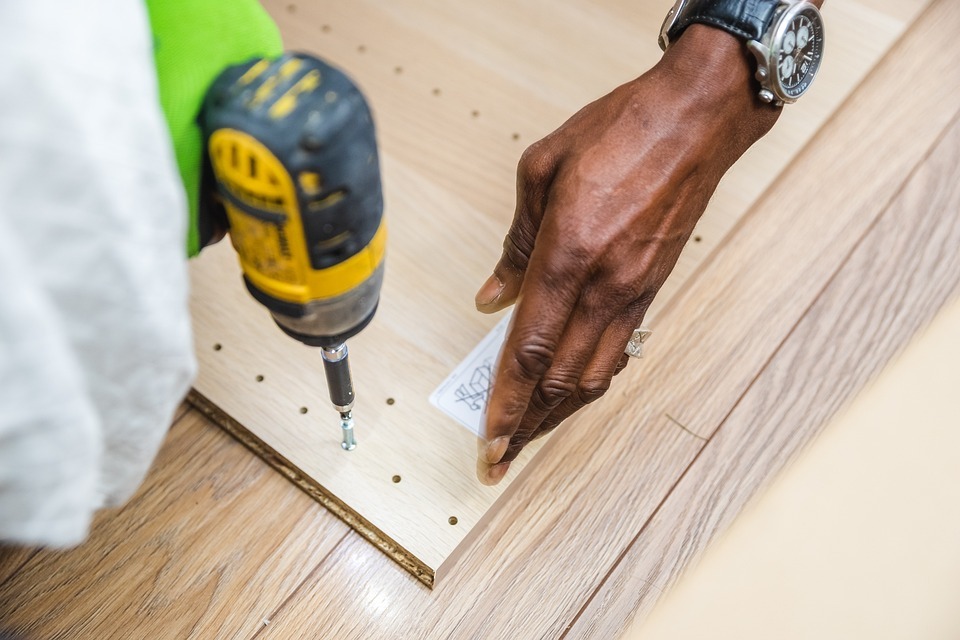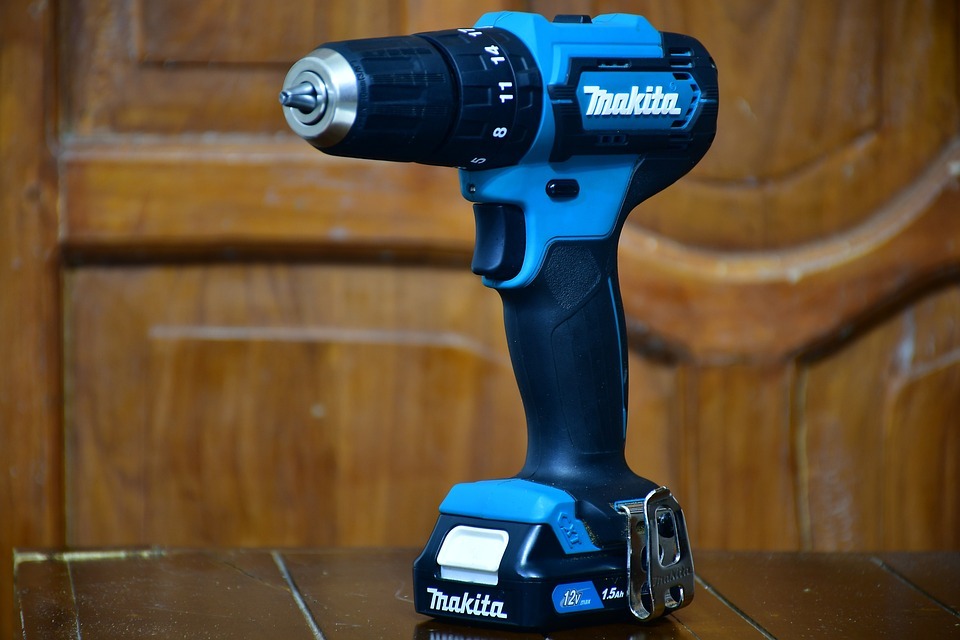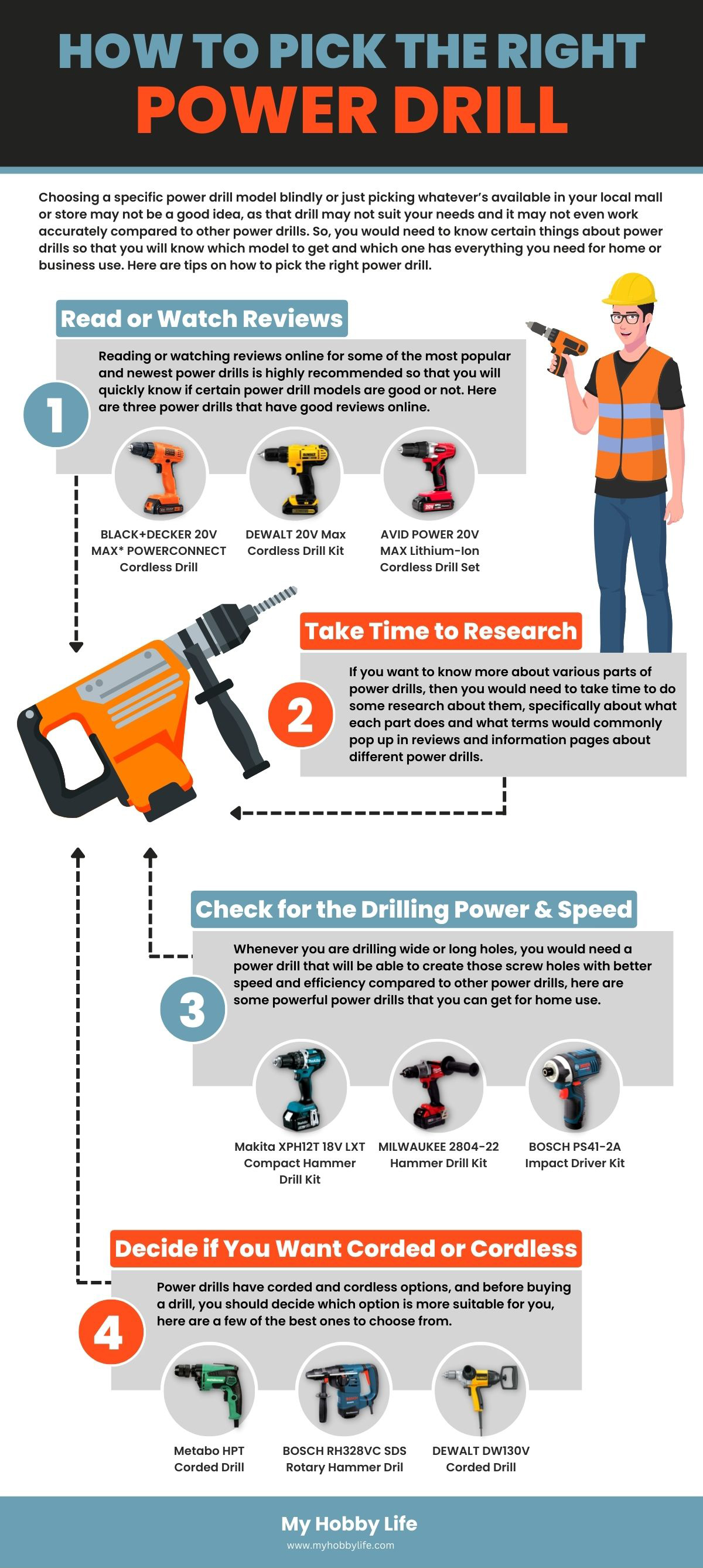In terms of home tools, the power drill is arguably one of the most important tools that you should have. Not only are they effective in quickly drilling holes that can be utilized for screwing in shelves, cabinets, and other pieces of furniture, but they are also very useful for craft projects where you have to build wooden dioramas, action figures, and more creative creations.
For a cheaper option, you have the choice of drilling holes on walls, floors, ceilings, and various objects using a hand drill, which has a crank that you can turn to slowly rotate the drill bit. Unfortunately, the hand drill will require a lot of time and effort before you can finish creating just one hole. But, with a power drill, you can drill multiple holes in just a few minutes. The tool is powered by batteries or electricity, which allows it to move faster while still having enough force to drill holes even on the toughest surfaces.
Due to how great it is as a tool for home or for workshops, the power drill is already available from various brands that also sell different models of battery-powered or electrical tools. With so many brands and models to choose from, people that are new to power drills may have a difficult time finding the most suitable one for them. In this article, we will provide you with a guide on knowing several details about the power drill so that you will know exactly what aspects of the tool to inspect in order to see which one to buy. So, here is the guide to using the right power drill.
What is a Power Drill?
A power drill is a tool that is primarily used for drilling holes on various surfaces, which can be made from metal, wood, or plastic. Power drills are commonly powered by electricity or batteries, but there are also a few that are powered by compressed air, which is provided to them by an air compressor.
Whenever power drills are powered by electricity, they would have a cord attached to them, which would then connect to an electric outlet. If the power drills have batteries, they don’t need to be connected to an outlet to work since the batteries are already providing them with power. [1] Most power drills come with rechargeable batteries, and these batteries are actually the ones that need to be connected to an electric outlet to recharge.
There is a misconception that power drills are just the small electric or battery-power drills used at home, but the truth is that power drills can come in different sizes, and there are even ones that are so large and consumes so much energy that they can only be used in factories and other industrial establishments.
As long as a drilling tool or machine is powered by electricity, it can be considered a power drill. But there is no denying that the most popular kind of power drills are the ones that have a handle to keep the drill steady while you are gripping it with one or two hands.
What are the Different Types of Power Drills?
There are different types of power drills that are available for purchase at DIY shops, hardware stores, and online web stores, and each of these types has specific purposes or functions. Here are the different types of power drills that you should know about.
Drill Driver
The most common type of power drill is the drill driver, which has a detachable drill bit that can turn clockwise or counterclockwise depending on the tool’s settings. Drill drivers would often have a set of drill bits that have varying lengths and sizes, so you can customize the size of the hole you want to create on a specific surface or object. Besides creating holes in wood, plastic, and thin sheets of metal, drill drivers are also utilized for screwing in different lengths of screws or fasteners.
Moreover, when you use the counterclockwise motion on the drill driver, it can take out screws that are screwed too tightly that you won’t be able to use a regular screwdriver on them. Drill drivers can either be corded or cordless, and they will also have a drill clutch that allows you to control the amount of power that the tool transfers whenever you are driving screws on surfaces. [2]
Hammer Drill
The hammer drill looks like an ordinary drill driver at first glance, but what makes it different from the drill driver is that it has a special function that moves the drill bit back and forth in a hammering motion, which is effective in chipping away concrete. [2] So, the hammer drill is suitable for screwing nails or screws onto concrete, which is significantly tougher than wood or plastic.
If you also want to remove tiles that are glued on walls or floors, you will be able to do so using a hammer drill, although you will need a tile remover bit that looks like a bigger flathead screwdriver. Most hammer drills available today allow you to turn off the hammering motion for the drill bit so that it basically acts like a regular drill driver.
Impact Driver
The impact driver is a more powerful drill driver that offers more force whenever you drill a new hole. Because it has a stronger motor, the impact driver would typically drill holes faster compared to regular drill drivers, which makes it a great tool to have if you are going to drill multiple holes on specific surfaces.
In addition to the stronger motor, the impact driver is capable of fast drilling because of its hammer and anvil mechanism, wherein the hammer strikes the anvil behind the drill bit, and this would then produce a pushing or pounding motion on the drill bit while it rotates. [3] The pushing motion allows the drill bit to dig deeper into the surface and create a hole faster.
Combination Hammer
The combination hammer, also known as the rotary hammer, is the much larger version of the hammer drill that is used on thicker and tougher concrete and surfaces. The sheer size of the combination hammers allows it to have parts that are capable of hammering and chipping away larger chunks of concrete in just a few minutes.
Most combination hammer drills have two built-in modes, which are rotation hammering and chipping. The rotation hammering mode enables the user to drill large holes easier and faster since the device also hammers the part of the concrete where you want to create a hole. The chipping mode is primarily utilized to pulverize or demolish specific areas of concrete and other tough surfaces. [3]
Variable Speed Drill
The variable speed drill is a type of power drill that gives you more options when it comes to the speed of the drill bit’s rotation. You can adjust the speed of the drill bit using the speed trigger, which is located on the handle of the variable speed drill. So, the stronger you push the trigger, the faster the drill bit will rotate.
The variable speed drill shouldn’t be confused with the adjustable power drill, which has switches or knobs that control the speed instead of a trigger on the handle. With the variable speed drill, you can automatically adjust the speed of the power drill without the need to stop drilling by just controlling how much pressure you apply on the speed trigger.
Drill Press
The drill press is arguably one of the largest types of power drills, but despite its size, the drill press is actually used for precise drilling rather than heavy drilling, like what the combination hammer drill does. The drill press is utilized to create precise holes on tough surfaces like thicker slabs of wood or steel, and it can also be used to create larger holes that compact power drills cannot create. This type of power drill is typically found in factories and workshops, wherein workers would use the drill to create holes in objects with better accuracy.
What are Drill Bits?
We have already mentioned the term “drill bits” numerous times in this article, and if you don’t know what they are, they are actually the parts of the power drill that rotates and attaches to the front of the tool. Basically, the drill bits are the ones that come in contact with the surface you will be drilling holes on.
What are the Different Types of Drill Bits?
Drill bits have varying widths, lengths, and shapes, and some of them have specific purposes. Here are the common types of drill bits that you should know about.
Twist Drill Bit
The twist drill bit is the most common type of drill bit and is usually included with the power drill. In power drill kits, you will have a set of twist drill bits that have different lengths and widths so that you can create more than one hole size on a wooden, plastic, or metal surface.
Brad-Point Drill Bit
The brad-point drill bit has a different point or end than the twist drill bit because instead of having only a pointy or spear-like end, the brad-point drill bit has several sharp points that are smaller. The multiple sharp points of a brad-point drill bit allow it to produce a cleaner hole on a surface. In addition, brad-point drill bits are also more accurate when it comes to drilling. The brad-point drill bits are more suitable for wooden objects or surfaces, as they can create screw holes with little to no chips or blemishes on the wood.
Bell Hanger Drill Bit
The bell hanger drill bit, also known as an installer drill bit, is a special kind of twist drill bit that is specifically used to create holes for wires. What’s unique about the bell hanger drill bit is its flexibility, as it can curve in different directions. The flexibility of the hanger drill bit then enables it to create holes in various areas of a wall. For example, if you are going to insert a wire from the front side of the wall to the top side, you can use the bell hanger or installer drill bit to create a hole on the front side and curve it upwards to reach the top of the wall. [4]
Auger Drill Bit
The auger drill bit is similar to the brad-point drill bit in terms of having multiple sharp points. However, what makes the auger drill bit different is that it actually looks like a much bigger twist drill bit with a more pronounced flute, which is the term used to describe spiral carvings on the body of the drill bit. The bigger flutes force the particles and dust created by the drilling process to go up and out of the hole so that they won’t get stuck inside. Furthermore, because of its size, the auger drill bit is sometimes utilized to create holes that are wider than what twist drill bits can produce.
Self-Feed Drill Bit
The self-feed drill bit is a type of drill bit that doesn’t have flutes. But the self-feed drill bit still works similar to the auger drill bit, as it can also produce a wide hole on different surfaces with better accuracy. The end of the self-feed drill bit looks like a circular saw with multiple sharp points and the bottom, and this shape enables it to create a much wider hole compared to the auger drill bit.
Forstner Drill Bit
If you want to create holes that have a flat bottom, you will need a Forstner drill bit. This type of drill bit looks like an auger drill bit in terms of appearance, but it’s different in the sense that its claw-like end is shorter, and it would usually have more sharp points. The sharp points of the Forstner drill bit are equal in height, and this allows the bit to produce holes that have perfectly flat bottoms.
Paddle Drill Bit
As its name already suggests, the paddle drill bit has a flat end that makes it look like a very small paddle or spade. However, it still has a sharp point at the top that is helpful in piercing through various objects and surfaces. The paddle drill bit enables the power drill to create wider holes on wood, although it doesn’t create flat bottoms like the Forstner drill bit does.
Hole Saw Drill Bit
The hole saw drill bit is a combination of the twist drill bit and the self-feed drill bit, as it has both a twist drill part that is responsible for piercing a material’s surface and a self-feed drill part that collects the dust, wood chips, or particles that will accumulate as a result of the drilling process. The hole saw drill is suitable for installing door handles and other types of door hardware. Moreover, the hole saw drill is also great to use on metal objects and surfaces.
Step Drill Bit
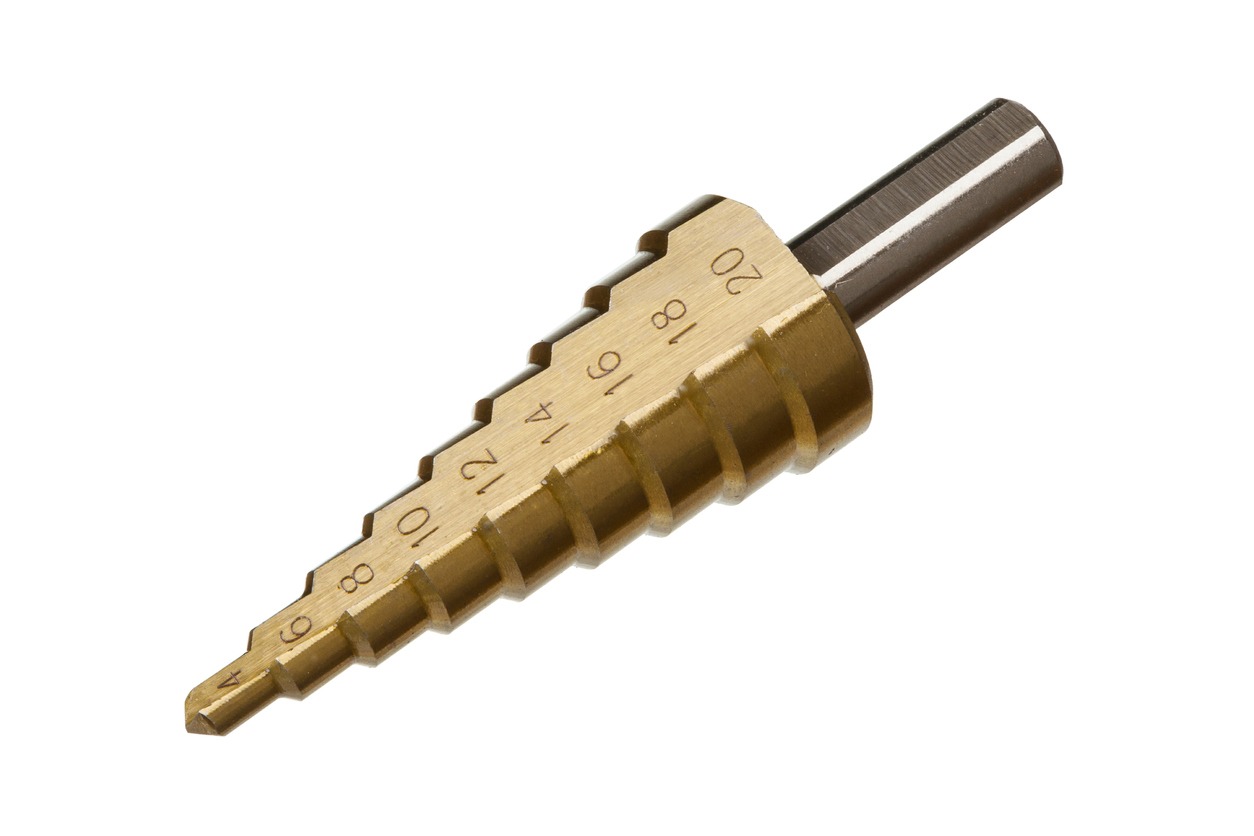
Spear Point Drill Bit
The spear point drill bit is utilized for sensitive materials like glass, ceramic tiles, and others. It has a much softer point compared to most drill bits, so it wouldn’t crack or chip windows, doors, or tiles made of glass, porcelain, or ceramic.
Sanding Drill Bit
The sanding drill bit is mainly used to grind wood and make its surface smoother. Raw wooden slabs would often have rough surfaces that can cause splinters, which is why sanding or buffing using a sanding drill bit or a proper sanding tool is essential if they will be used for making furniture. Sanding drill bits can be cylindrical, conical, and circular in shape and are not really used for creating holes or piercing materials.
Carving Drill Bit
As opposed to the sanding drill bit that doesn’t have a sharp point at all, the carving drill bit has a very sharp and small point that makes it perfect for carving wood, which is done to add decoration or artwork on the wood’s surface. However, the carving drill bit doesn’t have flutes or spiral carvings on its body, so it is also not made for drilling and creating screw holes like the sanding drill bit.
Mixing Drill Bit
The mixing drill bit has a long body and a point that looks like a simplified version of the beaters you would usually see on hand mixers for baking or cooking. The mixing drill bit is designed to mix paint or cement. If you don’t have a portable paint mixer and cement mixer at home, you can just use your power drill and install a mixing drill bit to mix a small amount of cement or paint on a container.
Countersink Drill Bit
Countersink drill bits, also known as screw pilot drill bits, are not necessarily used to create holes, as they are primarily utilized to carve the top of the hole to make sure that screws or fasteners that will be placed in the holes will sit flush and flat on the surface.
Plug Cutter
The plug cutter is a type of drill bit that is also not used to make holes. Instead, the plug cutter is specifically used to make wood plugs from slabs of wood. [5] The wood plugs are often inserted into holes to hide screws. The countersink drill bit is utilized to lengthen and widen the top of a screw hole, and once the screw is inserted, a wood plug can then be placed on the extra space on the head of the screw.
What are the Uses of a Power Drill?
There are many different uses of a power drill, as evident in what we wrote for the different types of power drills. Let us discuss those uses further and see if they apply to your needs at home or for your business.
Drill Perfect Holes
One of the best uses of a power drill is to create perfect holes for various types of surfaces. Power drills are capable of performing precise movements, so the holes that they create are accurate and have little to no blemishes. Using a hand drill to make holes can be incredibly difficult, as the holes that the drill makes are not really perfect and may get damaged over time. So, instead of wasting sweat and time using a hand drill, it would be much better to get a power drill.
Insert and Take Out Screws with Ease
After creating holes, you would then have to insert the screws on those holes using a screwdriver. However, if there are so many screws that you need to insert, we recommend that you use a power drill instead, as it takes less time and effort to screw in fasteners using it. Besides inserting screws, you can also use the power drill to take out screws with ease. The counterclockwise rotation feature of power drills is very useful in taking out screws that are screwed in too tightly on surfaces, as you can’t just use a screwdriver for them.
Use the Power Drill for Carving
Another great use of a power drill is for cutting wood into different shapes or curves. However, in order for you to do so, you would need to buy a set of sanding bits, which have rough circular ends that are perfect for cutting wood into perfect curves. There are also carving bits that you can, which have sharper ends that are suitable for carving patterns and artworks on a wooden surface.
Mix Paint or Cement
Interestingly, you can use a power drill to mix paint or cement by installing a paint mixer drill bit on the tool. [6] Of course, the power drill used at home is too small to mix large amounts of cement or paint, but it is powerful enough to mix substances on a small bucket or tub. If there is a design or art project you like to do at home that requires you to mix paint, use the power drill so that you can achieve your desired colors.
Remove Rust on Metal
The sanding drill bits you can buy in hardware stores and online shops can also be used to remove rust on the surface of metal doors, walls, floors, and objects. In addition, you can also buy an angle grinder bit, which is effective in grinding metal and sanding out rust.
How to Pick the Right Power Drill
Choosing a specific power drill model blindly or just picking whatever’s available in your local mall or store may not be a good idea, as that drill may not suit your needs and it may not even work accurately compared to other power drills. So, you would need to know certain things about power drills so that you will know which model to get and which one has everything you need for home or business use. Here are tips on how to pick the right power drill.
Read or Watch Reviews
Reading or watching reviews online for some of the most popular and newest power drills is highly recommended so that you will quickly know if certain power drill models are good or not. In addition to ratings or scores, the reviews would also provide you with every information you need about the pros and cons of different power drill models, as well as some of their best and unique features or functions. Here are three power drills that have good reviews online.
- BLACK+DECKER 20V MAX* POWERCONNECT Cordless Drill – One of the most popular cordless drills in the market is the 20V MAX POWERCONNECT by BLACK+DECKER. This cordless drill comes with a wide variety of drill bits and accessories, so you don’t have to buy anything else if you are just going to use it for drilling holes in various widths and lengths.
- DEWALT 20V Max Cordless Drill Kit – this cordless drill has two speed modes, which are 0-450 RPM and 1,500 rpm, which are useful for drilling holes and fastening screws. Each cordless drill kit comes with a lightweight bag where you can store the drill, rechargeable batteries, charger, and various drill bits.
- AVID POWER 20V MAX Lithium-Ion Cordless Drill Set – what’s great about the AVID Power cordless drill set is that it is powered by a lithium-ion battery pack that has a USB port, which means that you can charge it using a phone charger. Similar to the other power drills mentioned above, the AVID POWER cordless drill is compact and lightweight, so you won’t have a difficult time using and handling the drill.
Take Time to Research
If you want to know more about various parts of power drills, then you would need to take time to do some research about them, specifically about what each part does and what terms would commonly pop up in reviews and information pages about different power drills. Reviews are a great gateway to learning about power drills, but sometimes the information you get from them may be too confusing at first, as you don’t actually know what parts or terms the reviews are talking about. So, before buying any power drill, make sure that you actually know how it works and how to use it.
Check for the Drilling Power and Speed
Whenever you are drilling wide or long holes, you would need a power drill that will be able to create those screw holes with better speed and efficiency compared to other power drills. In order to know if a power drill has strong drilling power, you would have to check for the drill’s torque. The torque of a power drill is determined by measuring the amount of rotation force exerted by the drill. This is known as the rate per minute or RPM. [7]
The more torque the drill has, the more it is able to drill holes in tougher surfaces. Unfortunately, for regular power drills, more torque means less speed on the rotation, but if you want speed without sacrificing torque, you will need to get hammer drills and impact drivers, as these drills increase their torque whenever their speed is also increased. If you want strength and extra torque, here are some powerful power drills that you can get for home use.
- Makita XPH12T 18V LXT Compact Hammer Drill Kit – this brushless hammer drill can be used as both a drill driver and a hammer drill, which makes it very versatile. However, its best feature is its torque can go for up to 2,000 RPM, and it has enough strength to drill wide or long holes with ease.
- MILWAUKEE 2804-22 Hammer Drill Kit – Another powerful hammer drill is the MILWAUKEE 2804-22, which can provide up to 60% more power compared to most power drills. In addition to power, this hammer drill also has a REDLITHIUM XC5.0 battery pack that has a charge that can last longer than other lithium-ion batteries for cordless drills.
- BOSCH PS41-2A Impact Driver Kit – the impact driver that has one of the shortest head-length in the market is the BOSCH PS41-2A, and this feature allows it to be more compact and suitable for drilling holes in tight and small spaces. But, its most useful feature is its torque, as it can reach up to 2,600 RPM, which is incredibly powerful for such a small tool.
Decide if You Want Corded or Cordless
Power drills have corded and cordless options, and before buying a drill, you should decide which option is more suitable for you. A lot of people prefer cordless power drills, as they don’t have to connect the drill to an electric outlet anymore, and this gives them more freedom in terms of where they can use the drill.
On the other hand, there are some people that prefer corded power drills, as it often has consistent power and speed, unlike cordless drills that lose their speed and strength once their batteries are near depletion. The products or models we have already mentioned above are cordless options, and if you want to get a corded power drill, here are a few of the best ones to choose from.
- Metabo HPT Corded Drill – a great corded drill for beginners is the Metabo HPT corded drill, a lightweight power drill that has a powerful 7-amp motor that is suitable for most types of drilling work or projects. This power drill also has a variable speed trigger so that you can control the speed of the drill bit’s rotation for better precision.
- BOSCH RH328VC SDS Rotary Hammer Drill – if you are looking for a good rotary hammer drill, the BOSCH RH328 is arguably one of the best drills you can get. In addition to being fairly lightweight, the BOSCH rotary hammer drill also has an active vibration control feature on the hammer mechanism and the handle or grip area, which helps in keeping the drill and your hand steady while creating holes in different surfaces.
- DEWALT DW130V Corded Drill – an amazing corded drill that is suitable for home use is the DEWALT DW130V. This corded drill has a torque of 0-550 RPM, and while it is relatively low compared to other drills in this article, it is perfect for slow but accurate drilling.
See What Batteries the Drill Uses
If you are going to buy a cordless power drill, you should first check what kind of batteries it uses, as this is important in determining the battery life and charging time. Here are three of the most popular kinds of batteries used for power drills. [8]
- Nick-Cadmium Battery – this type of battery is the oldest kind utilized for batteries, and even though it is considered primitive, the nick-cadmium battery is still used for a variety of power tools because they are the toughest and the most wear-resistant out of all battery types. The nick-cadmium battery has a fast charging time, although they don’t retain a lot of charges.
- Nickel-Metal Hydride – this battery is typically more expensive than nick-cadmium, but it holds more charge and has a much longer battery life. However, the nickel-metal hydride battery is sensitive to low and high temperatures, so you will need to be careful where you store it.
- Lithium-Ion – the newest and arguably the most available battery for newer power drills. Lithium-ion is usually less affordable than the two other types of batteries, but it has the longest battery life while also having a very fast charging time. The downside to lithium-ion is that it is sensitive to heat, so you can’t use the power drill continuously, or else the battery will overheat and get damaged.
Conclusion
We hope that we provided helpful information and tips when it comes to picking the right power drill for your home or business. As we have stated, it is important to take some time to research and read various reviews and information pages about power drills, as this will help you in knowing what exactly to look for. Don’t rush your purchase and pick the power drill that best suits your preferences or needs.
References
[1] Wallender, L. (2022, September 23). How to Use a Power Drill: A Comprehensive Overview and Guide. The Spruce. Retrieved September 27, 2022, from https://www.thespruce.com/how-to-use-a-power-drill-1825112
[2] Koehler, K. (2021, August 12). Types of Drills – Know What Drill to Use When. Pro Tool Reviews. Retrieved September 27, 2022, from https://www.protoolreviews.com/types-of-drills-know-what-drill-to-use-when/
[3] HomeStratosphere’s Editorial Staff & Writers. (2022, July 7). What are the 9 Different Types of Drills? Home Stratosphere. Retrieved September 28, 2022, from https://www.homestratosphere.com/types-of-drills/
[4] Mahajan, B. 22 Types of Drill Bits | Drill Bit Types And Uses | Different Drill Bits Name | Best Drill Bits For Cutting Work. CivicConcepts.com. Retrieved September 30, 2022, from https://civiconcepts.com/blog/types-of-drill-bits
[5] Ortiz, P. (2022, September 23). 20 DIFFERENT TYPES OF DRILL BITS & THEIR USES – WHICH IS RIGHT FOR YOU? House Grail. Retrieved September 30, 2022, from https://housegrail.com/different-types-of-drill-bits/
[6] Gardner, C. 9 Handy Uses for Your Cordless Drill/Driver. Bob Vila. Retrieved September 28, 2022, from https://www.bobvila.com/slideshow/9-handy-uses-for-your-cordless-drill-driver-47827
[7] Velez, L. (2022). The Most Powerful Cordless Drills with High Torque, and Extended Battery Life. Thomas Publishing Company. Retrieved September 28, 2022, from https://www.thomasnet.com/articles/machinery-tools-supplies/best-most-powerful-cordless-drills/
[8] Data Power Tools. (2021, April 4). Batteries for Cordless Drills & Power Tools: NiCD Vs NiMH Vs Li-Ion. Data Power Tools. Retrieved September 28, 2022, from https://www.datapowertools.co.uk/blog/batteries-for-drills-power-tools-nicd-vs-nimh-vs-li-ion/
